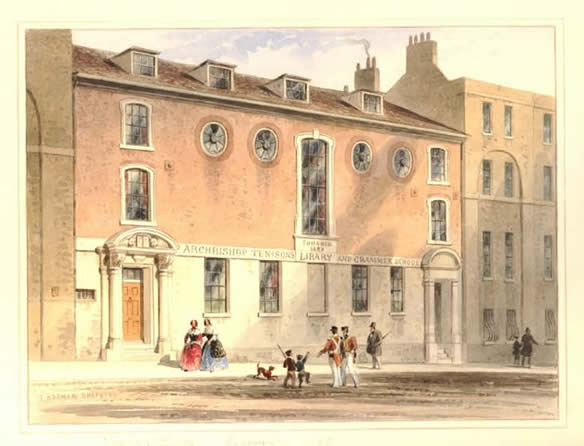
St Martin-in-the-Fields Workhouse (1725-1871): Artefacts and images
Unlike some other workhouses, there seem to be no surviving pictures or images of the St Martin-in-the-Fields Workhouse for the first hundred years of its existence (1725-1824). Although a crude idea of the ground plan of the institution can be gained from contemporary maps we have as yet found no drawing or picture of even part of the workhouse before the 1820s. We would be delighted if any reader can correct this impression.
It should be noted that Georgian workhouses were not static buildings, but were endlessly extended, internally reconfigured and rebuilt. The St Martin's workhouse was subject to piecemeal additions throughout its history, and a major rebuilding in 1771-2. The Victorian ground floor plan (part of a large scale Ordnance Survey Map) and other nineteenth-century depictions of the workhouse may, therefore, be only an uncertain guide to how the institution actually looked and functioned in the eighteenth century. The workhouse was demolished in 1871 as part of a project to extend the National Gallery. The extension to the Gallery was completed in 1876. The remainder of the site was used to house the National Portrait Gallery (completed 1896).
The workhouse contained a large amount of furniture, beds, clothing and bed linen. This represented temptation and paupers were very occasionally punished for stealing workhouse furniture, equipment, sheets and clothing. Thus, for example, Ann Berraford was sent to Bridewell in 1787 'for Stealing 33 Sheet[s] the Property of this Parish'. Again, Mary Mathews, was, in 1816, 'Committed to Tothill Fields Bridewell until the next Sessions at Westminster for Stealing blue Serge & brown Holland the Property of the Parish'.
Some useful information about the institution, particularly for its later nineteenth-century history, can be found in Peter Higginbotham's relevant workhouse page.
Known Images and Plans of the St Martin's Workhouse
A ground plan of the workhouse on the eve of its demolition in 1871
Workhouse of St Martin in the Fields, 1871, Front elevation taken from Castle Street
Workhouse of St Martin in the Fields, 1871, Front elevation taken from Duke's Court
Workhouse of St Martin in the Fields, 1871, Front elevation taken from Hemming's Row
*****************************************************************
Part of the St Martin's Workhouse was depicted in a picture by T. H. Shepherd in 1850 (see below). His picture of Archbishop Tenison's Library and Grammar School depicts, on the left of the School, the west side of the workhouse complex fronting Castle Street. Bars can be seen on the windows on the ground floor, with two figures in the street near the second barred window. To the right of the school is another part of the workhouse, which contains a womens' ward in 1871.

A floor plan survives for the New Poor Law institution, drawn on the eve of its demolition, around 1871. This is a detail of the 1871 large scale Ordnance Survey map of the Charing Cross and Trafalgar Square area.
Three striking pictures of the frontage of the workhouse were drawn, like the ground plan, just before the institution's demolition c. 1871. They show the front elevations of two very substantial red brick buildings, the block which fronted Hemmings Row, and the southern block that fronted Duke's Court. There is also a front elevation of the workhouse, together with Archbishop Tenison's School, from the same date.
With permission of the LMA, these images are depicted below.
Workhouse of St Martin in the Fields, 1871, Front elevation taken from Castle Street
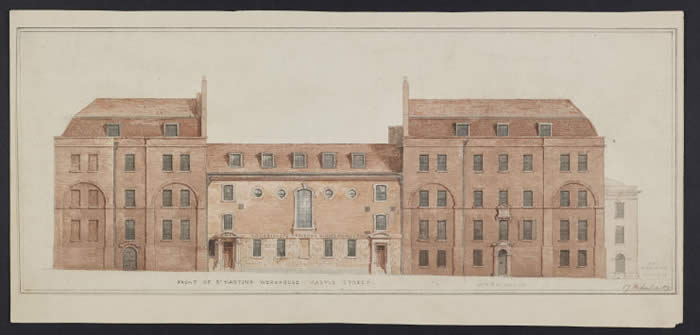
Workhouse of St Martin in the Fields, 1871, Front elevation taken from Duke's Court
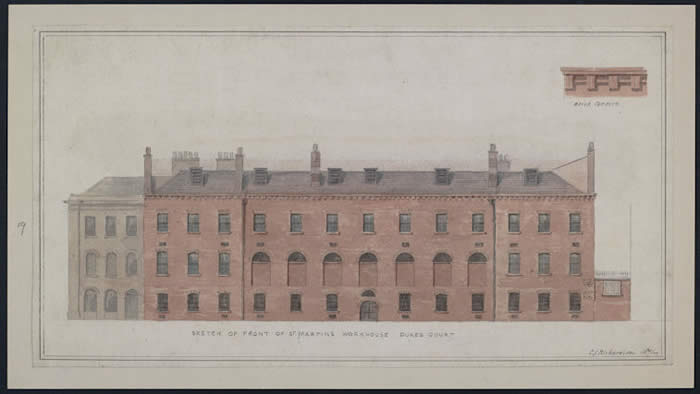
Workhouse of St Martin in the Fields, 1871, Front elevation taken from Hemming's Row
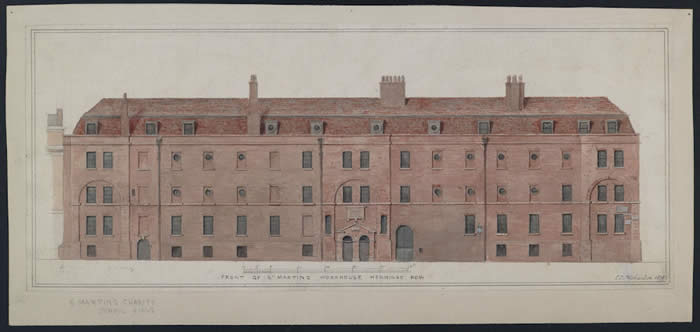
Associated Artefacts
Two candlesticks survive in the Museum of London's collection which are said to have been kept in the St Martin's Workhouse in the 1760s. They are depicted below:
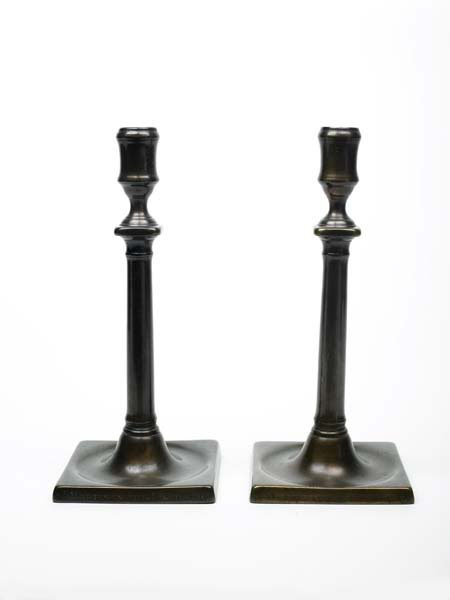
This website is maintained by jeremy.boulton@ncl.ac.uk